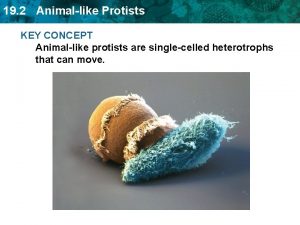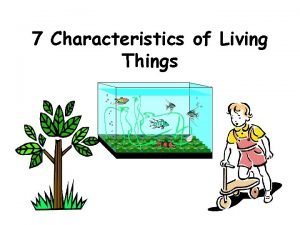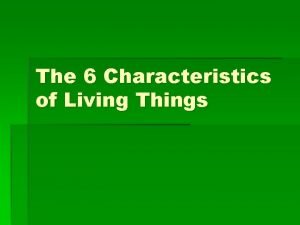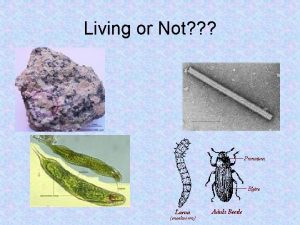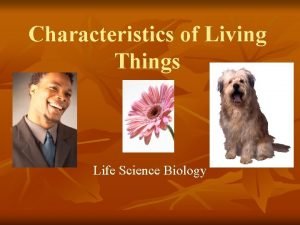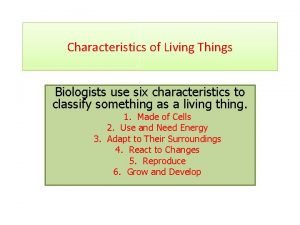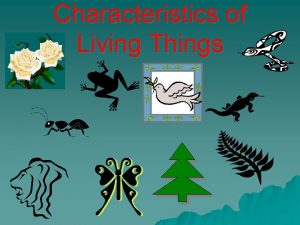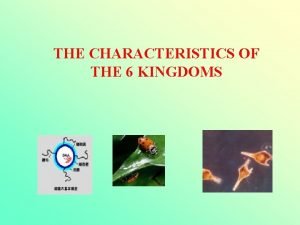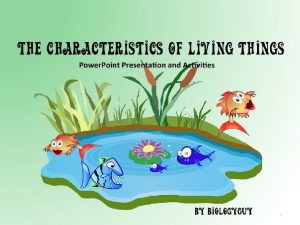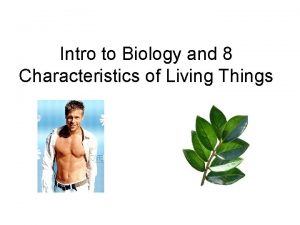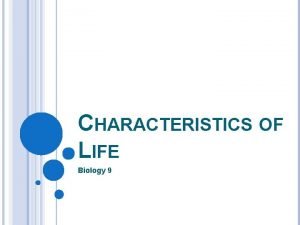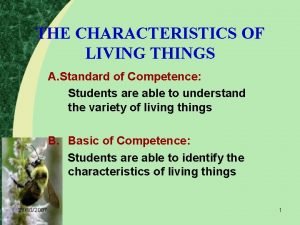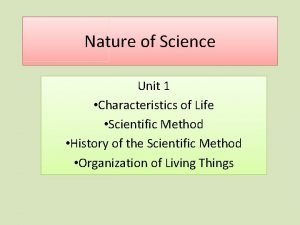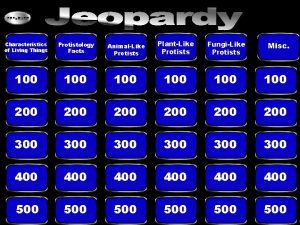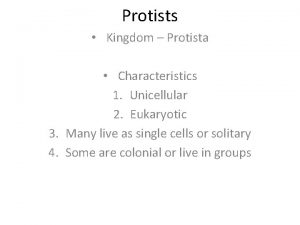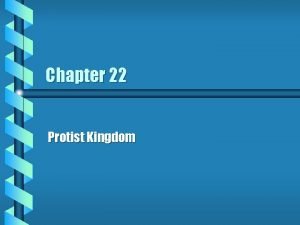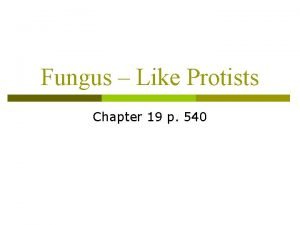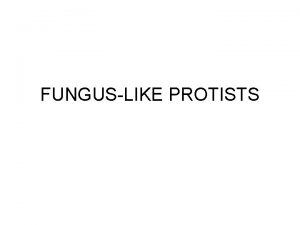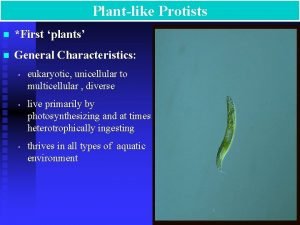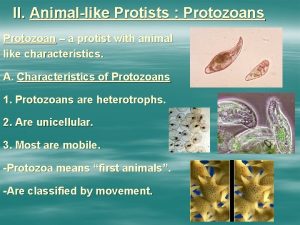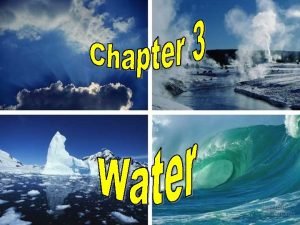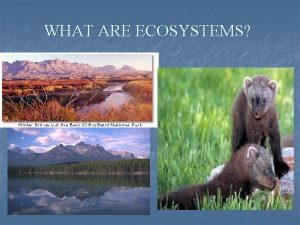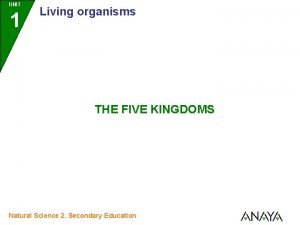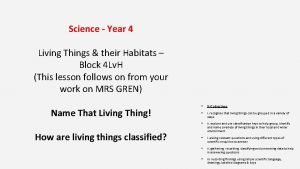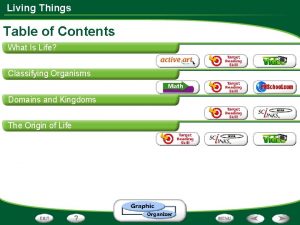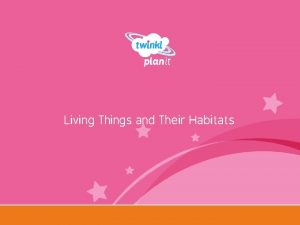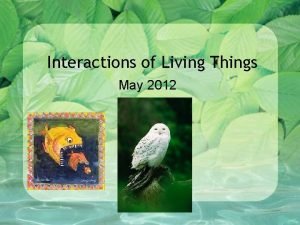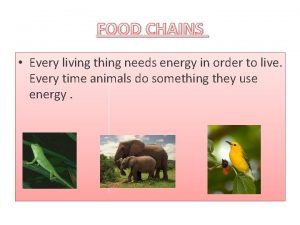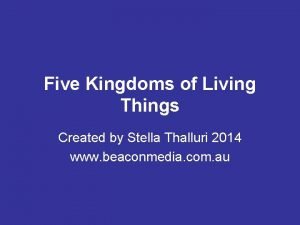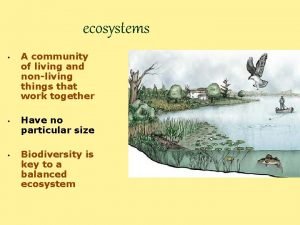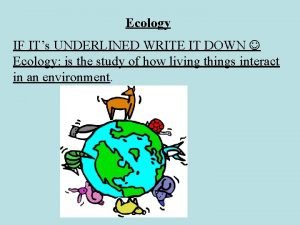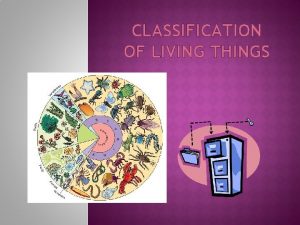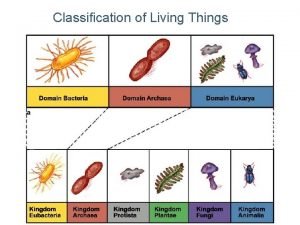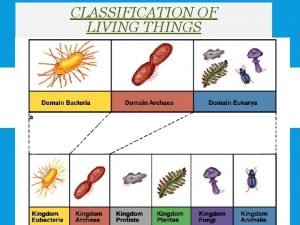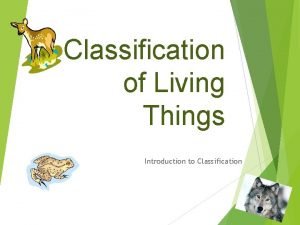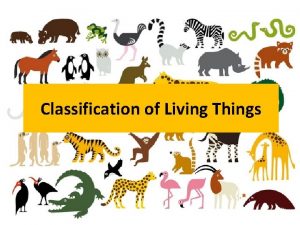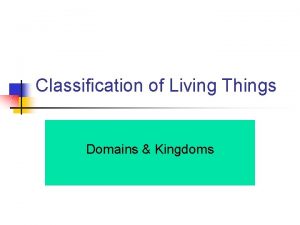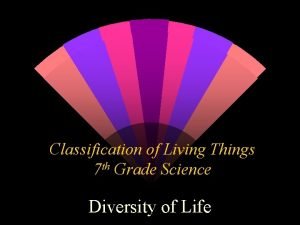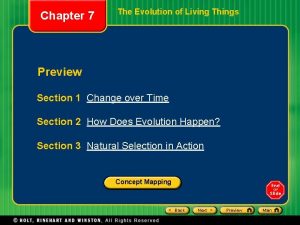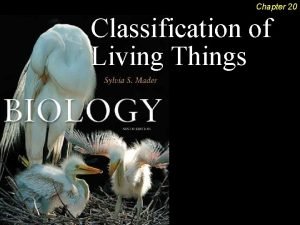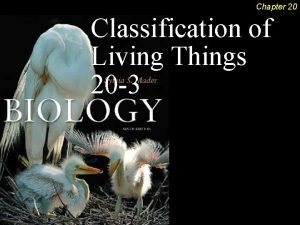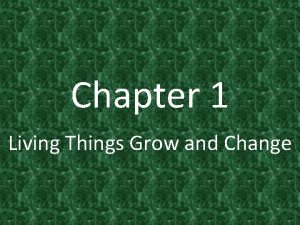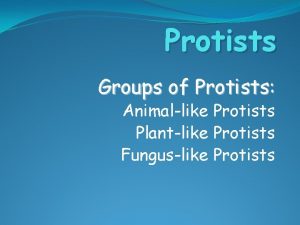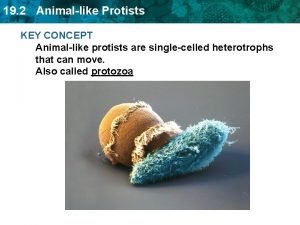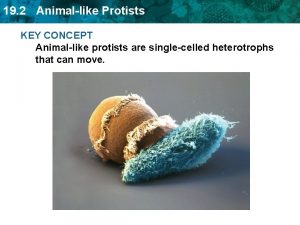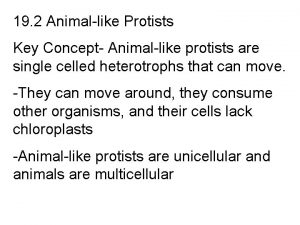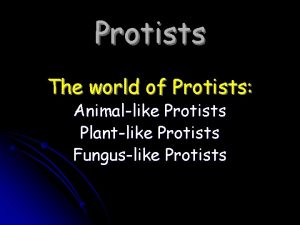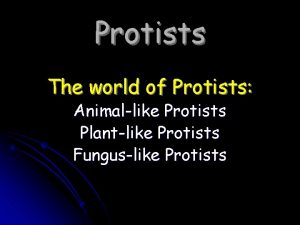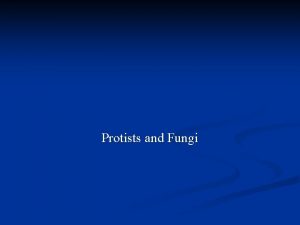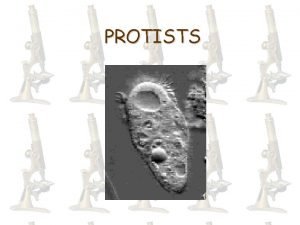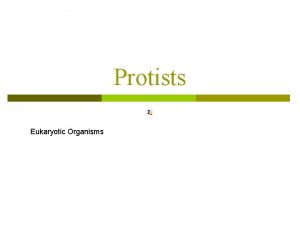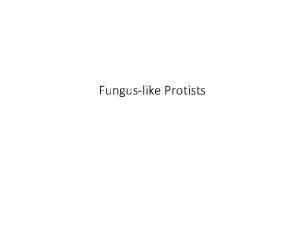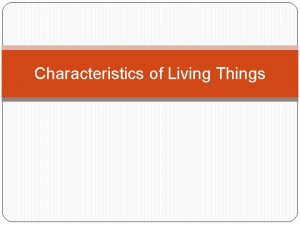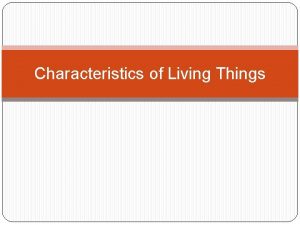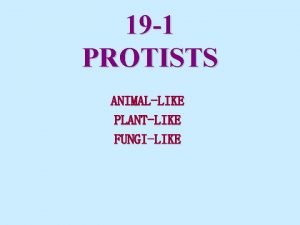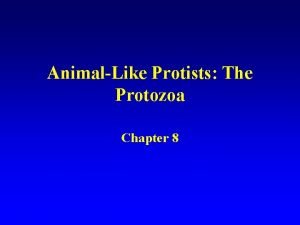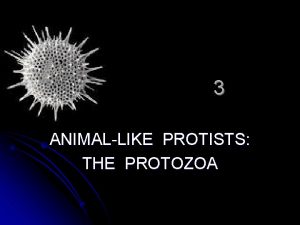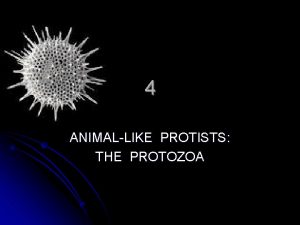Characteristics of Living Things Protistology Facts AnimalLike Protists






























































- Slides: 62

Characteristics of Living Things Protistology Facts Animal-Like Protists Plant-Like Protists Fungi-Like Protists 100 100 100 200 200 200 300 300 300 400 400 400 500 500 500 Misc.

One cell = 2+ cells = A 100

Unicellular Multicellular A 100

What process do autotrophs use in order to make food from energy? What process do heterotrophs use in order to create energy from food? A 200

Photosynthesis Cellular Respiration A 200

Refers to a stable internal environment A 300

Homeostasis A 300

Production of new life = ? A 400

Reproduction A 400

Includes carbohydrates, lipids, proteins, and nucleic acids: A 500

Chemicals of Life A 500

Protists were the first what on Earth? B 100

Eukaryotes B 100

In what type of environment do all protists live in – what do they need in order to survive? B 200

Water B 200

What are three types/categories of protiests? B 300

Animal-like Plant-like Fungi-like B 300

Light sensitive organelle found in euglenoids B 400

Eyespot B 400

Tough outer barrier that allows paramecium and euglenoids to retain their shape B 500

Pellicle B 500

All animal-like protists are made up of how many cells? C 100

One = unicellular C 100

What is another name for animal-like protists? C 200

Protozoans C 200

How do all animal-like protists obtain the energy they need to survive – what method? C 300

Heterotrophically C 300

DAILY DOUBLE C 400

How do amoebas, an animal-like protists move around and capture their food – what structure do they use? C 400

Pseudopods C 400

What hair-like structure do paramecium use to move and to capture food? C 500

Cilia C 500

What is another name for all plant-like protists? D 100

Algae D 100

What is the primary method of obtaining energy for all plantlike protists? D 200

Autotrophically D 200

What do plant-like protists use to capture energy? D 300

Pigments – example = chlorophyll (green) D 300

Plant-like protists are responsible for creating the majority of what in the atmosphere? D 400

Oxygen D 400

Which plant-like protists can be heterotrophic if sunlight is not available? D 500

Euglenoid/Euglena D 500

What is another name for the fungus-like protists? E 100

“Sort-of-like” organisms E 100

How are fungi-like protists similar to animals? E 200

They are all heterotrophic E 200

How are fungi-like protists similar to plants? E 300

They have cell walls E 300

How are fungi-like protists similar to fungi? E 400

The reproduce using spores E 400

This is a tiny cell that is able to grow into a new organism (used for reproduction). E 500

Spore E 500

What is a protist called if it causes disease/harm to another living thing? F 100

Parasite F 100

What do you call a relationship between two organisms where at least one organism benefits? F 200

Symbiosis F 200

What do you call a symbiotic relationship where both organisms benefit? F 300

Mutualism F 300

Which type of plant-like protists can grow at deep ocean depths because its pigments are excellent at absorbing trace amounts of light? F 400

Red Algae F 400

What disease do plasmodium create in humans? These protists spend their lives inside of mosquitos and humans. F 500

Malaria F 500
 Animal-like protist
Animal-like protist Whats an energy pyramid
Whats an energy pyramid Smallest living unit of life
Smallest living unit of life Pictures of seven life processes
Pictures of seven life processes 7 characteristics of life
7 characteristics of life 6 characteristics of living things
6 characteristics of living things Movement characteristics of living things
Movement characteristics of living things Six characteristics of living things
Six characteristics of living things Six characteristics of living things
Six characteristics of living things Two characteristics of living things
Two characteristics of living things Characteristics of life
Characteristics of life Wolf kingdom classification
Wolf kingdom classification Mrs gren activity
Mrs gren activity Characteristics of animals as living things
Characteristics of animals as living things 8 characteristics of living things
8 characteristics of living things Characteristics of living things ppt
Characteristics of living things ppt Nine characteristics of living things
Nine characteristics of living things 10 characteristics of living things
10 characteristics of living things Nature of life science
Nature of life science 7 characteristics of living things
7 characteristics of living things Facts about protists
Facts about protists Protist characteristics
Protist characteristics Zygnema locomotion
Zygnema locomotion What are fungus like protists
What are fungus like protists Phylum myxomycota
Phylum myxomycota Protists are unicellular or multicellular
Protists are unicellular or multicellular Pyrrophyta characteristics
Pyrrophyta characteristics Animal like protists characteristics
Animal like protists characteristics Is a burning candle living or nonliving
Is a burning candle living or nonliving Living non living dead
Living non living dead Why is water important to living things
Why is water important to living things Freshwater non living things
Freshwater non living things Kingdoms of living things
Kingdoms of living things Life's structure and classification answers key
Life's structure and classification answers key Living things meaning
Living things meaning Ecosystems examples
Ecosystems examples Organic compound made by living things
Organic compound made by living things Living things table
Living things table Jackal linnaean system
Jackal linnaean system 6 kingdoms of life
6 kingdoms of life Living things 20
Living things 20 Gets its energy from eating living things
Gets its energy from eating living things Food chains are interconnecting food webs.
Food chains are interconnecting food webs. Five kingdoms science
Five kingdoms science Limiting factor in ecosystem
Limiting factor in ecosystem Gets its energy from eating living things
Gets its energy from eating living things Kingdoms of archaea
Kingdoms of archaea A genus is subdivided into smaller groups called
A genus is subdivided into smaller groups called The 8 levels of classification
The 8 levels of classification Dichotomous key shark activity
Dichotomous key shark activity Genus and species difference
Genus and species difference 5 groups of living things
5 groups of living things Domain of living things
Domain of living things What are the 7 classifications of living things
What are the 7 classifications of living things Thampi's torrent frog
Thampi's torrent frog Classification systems _____.
Classification systems _____. Living things meaning
Living things meaning Chapter 7 the evolution of living things answers
Chapter 7 the evolution of living things answers Categories of living things
Categories of living things Living things 20
Living things 20 Categories of living things
Categories of living things Living things grow and change
Living things grow and change Cells are the building blocks of all living things
Cells are the building blocks of all living things
